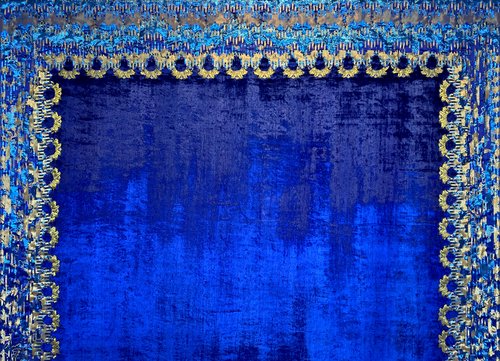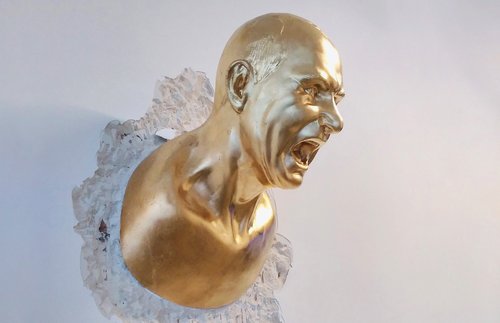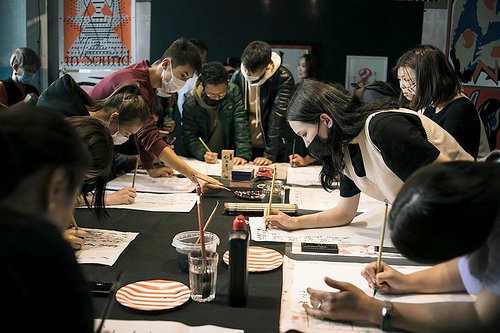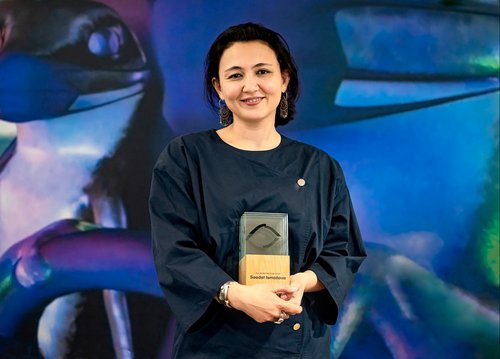Tacit Tongues: oppressed languages as a source of empowerment
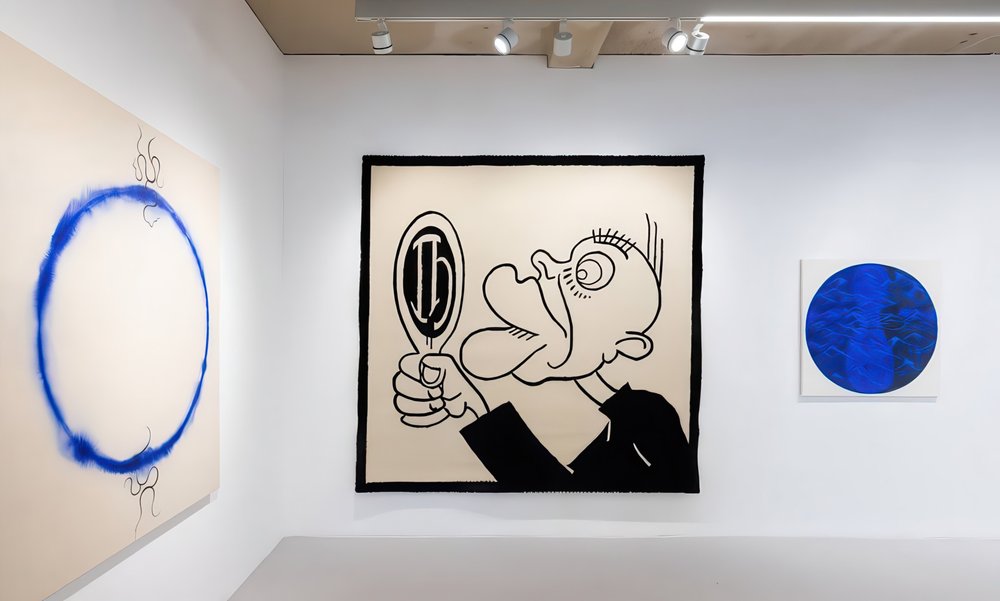
Tacit Tongues. Exhibition view. Paris, 2025. Photo by Ivan Erofeev. Courtesy of NIKA Project Space
A new group show curated by Timur Zolotoev at the Parisian branch of Dubai’s Nika Project Space brings together works by artists from Mongolia and Buryatia as well as the Berlin-based collective Slavs and Tatars, offering us a profound reflection on language.
‘Tacit Tongues’ at Nika Project Space in Paris is a curatorial project by Berlin-based curator Timur Zolotoev which focusses on language as a haven for personal and collective memory, self-healing, rediscovering one's own identity and the struggle against oppression. All of the artists featured are native speakers of endangered languages that have been subjected to state pressure. An interdisciplinary Mongolian artist Nomin Zezegmaa (b. 1992) based between Berlin and Ulaanbaatar uses the traditional Mongolian script in her works, which was replaced in 1946 by the Cyrillic script during the Mongolian People's Republic. In her home country that script remained in very limited use, although it is still used by Mongolian speakers in the Inner Mongolia region in China. Despite recent attempts of the current government to revive this script it is still used by a minority, and fragile. Zezegmaa tries to preserve this script in her everyday practice, saying “a foreign language is a tool, our own tongue is the soul”. As an Old Uyghur script, Mongolian like Oirat Clear, Manchu and Buryat traditional scripts are the only known vertical scripts written from top to bottom in lines from left to right. Apart from inserting lines written in traditional Mongolian Zezegmaa uses visual aspects of this script in her paintings such as ‘Liquid Thought’. The artist applies Donna Haraway’s term Chtulucene to her practice, which states “we require each other in unexpected collaborations and combinations, in hot compost piles. We become — with each other or not at all”.
The return of artists to the languages of their ancestors and the search for their identity, erased by repression, wars, and migration processes, is indeed becoming a unifying compost, in Haraway’s terms. Another script from the same family is present in works by two Buryat artists Mila Balzhieva (b. 1991), Natalia Papaeva (b. 1989). Even in her biography Papaeva emphasises that she was born in Buryatia located in Eastern Siberia, without mentioning Russia. Meanwhile confused visitors try in vain to find the country of Buryatia on the map. Papaeva continuously brings her native Buryat language into the public realm, trying to protect it. In her practice she often transforms text into motion and sound. Her video installation ‘The year I Decided to Become My Own Moon’ (2024) offers a reinterpretation of a poem by renowned Russian conceptual poet Vsevolod Nekrasov (1934–2009). By using the melody of the Buryat language and the image of the moon, referring to the lunar calendar, Papaeva brings Nekrasov’s poem into another mindset and temporality. Her works ‘The Process of Reading’ and ‘The Mountain with a Big Nose’ continue to visualize how thoughts operate in our brain.
Fascinated by fossils of Glossopteris Mila Balzhieva has created a series of textile works. This plant is the largest and best-known genus of the extinct Permian order of seed plants. The fossils were found by paleontologists in the current Perm region in the Russian Urals. On her social media page Balzhieva cites an architect Christopher Alexander (1936–2022) “The garden metaphor encourages the idea of information which will grow”. Who knows if this found leaf once extinct may revive one day, or whether it is a message that we should decrypt.
The exhibition is reinforced by several works by the Slavs and Tatars collective. This international group whose members have Polish, Iranian and Belgian origins, started its journey in 2006 as an informal reading group and has kept language at the centre of its artistic and research practice through the years. They have published ten books, including research on alphabet politics, sacred languages and other linguistic topics. Their installation ‘Szpagat’ (2017) depicts the human tongue divided into two parts, trying to do the splits and reach in two opposite directions. They simultaneously show both the physical painfulness of this process and the incredible plasticity of language.
‘Both Sides of the Tongue’ (2015) is a modified cover of Roland Barthes iconic essay ‘S/Z’ where he juxtaposes two Balzac characters. The Slavs and Tatars added an inscription with the Arabic letters ‘ﻆ‘ / ’ﺽ’, emphatic versions of the original S/Z. Thus, as they note, they continue “investigation of language as a nexus of sensualized politics, via two letters considered highly specific to the Arabic language”. Moreover they breach the dominance of Western thought and research by demonstrating the agency of another language. In every country where they show their works, Slavs and Tatars use the cover of ‘S/Z’ in the local language.
Their ‘Kitab Kebab’ installation first conceived in 2014 is placed in the centre of the exhibition space, a work which immediately attacks attention, summing up in a way the artists' reflections on language. A traditional kebab skewer pierces a selection of books. This time as the work is being shown in France the artists chose ‘The Fear of Barbarian’ by Bulgarian French philosopher and structuralist literary critic Tzvetan Todorov (1939–2017); a monograph on Soviet muslims by Vincent Moneil and ‘Farhad and Shirin’ an 11th century poem by Timurid poet Alisher Navoi often called Central Asia’s ‘Romeo and Juliet’. This installation sharply and persistently proposes that we reconsider our established knowledge about minority and indigenous people and finally accept their agency and liberate ourselves from established hierarchies. ‘Tacit Tongues’ demonstrates the wide and vivid palette of ideas which have emerged from non-dominant social groups and leaves us with many points to ponder. This exhibition clearly demonstrates the reconfiguration of the art scene, which can offer a new critical perspective and exist without looking back at rigid hierarchies.
Tacit Tongues. Mila Balzhieva, Natalia Papaeva, Slavs and Tatars, Nomin Zezegmaa
Romainville, Grand Paris, France
25 May – 19 July, 2025











